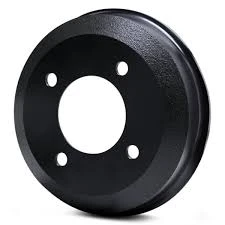
-
 Afrikaans
Afrikaans -
 Albanian
Albanian -
 Amharic
Amharic -
 Arabic
Arabic -
 Armenian
Armenian -
 Azerbaijani
Azerbaijani -
 Basque
Basque -
 Belarusian
Belarusian -
 Bengali
Bengali -
 Bosnian
Bosnian -
 Bulgarian
Bulgarian -
 Catalan
Catalan -
 Cebuano
Cebuano -
 Corsican
Corsican -
 Croatian
Croatian -
 Czech
Czech -
 Danish
Danish -
 Dutch
Dutch -
 English
English -
 Esperanto
Esperanto -
 Estonian
Estonian -
 Finnish
Finnish -
 French
French -
 Frisian
Frisian -
 Galician
Galician -
 Georgian
Georgian -
 German
German -
 Greek
Greek -
 Gujarati
Gujarati -
 Haitian Creole
Haitian Creole -
 hausa
hausa -
 hawaiian
hawaiian -
 Hebrew
Hebrew -
 Hindi
Hindi -
 Miao
Miao -
 Hungarian
Hungarian -
 Icelandic
Icelandic -
 igbo
igbo -
 Indonesian
Indonesian -
 irish
irish -
 Italian
Italian -
 Japanese
Japanese -
 Javanese
Javanese -
 Kannada
Kannada -
 kazakh
kazakh -
 Khmer
Khmer -
 Rwandese
Rwandese -
 Korean
Korean -
 Kurdish
Kurdish -
 Kyrgyz
Kyrgyz -
 Lao
Lao -
 Latin
Latin -
 Latvian
Latvian -
 Lithuanian
Lithuanian -
 Luxembourgish
Luxembourgish -
 Macedonian
Macedonian -
 Malgashi
Malgashi -
 Malay
Malay -
 Malayalam
Malayalam -
 Maltese
Maltese -
 Maori
Maori -
 Marathi
Marathi -
 Mongolian
Mongolian -
 Myanmar
Myanmar -
 Nepali
Nepali -
 Norwegian
Norwegian -
 Norwegian
Norwegian -
 Occitan
Occitan -
 Pashto
Pashto -
 Persian
Persian -
 Polish
Polish -
 Portuguese
Portuguese -
 Punjabi
Punjabi -
 Romanian
Romanian -
 Russian
Russian -
 Samoan
Samoan -
 Scottish Gaelic
Scottish Gaelic -
 Serbian
Serbian -
 Sesotho
Sesotho -
 Shona
Shona -
 Sindhi
Sindhi -
 Sinhala
Sinhala -
 Slovak
Slovak -
 Slovenian
Slovenian -
 Somali
Somali -
 Spanish
Spanish -
 Sundanese
Sundanese -
 Swahili
Swahili -
 Swedish
Swedish -
 Tagalog
Tagalog -
 Tajik
Tajik -
 Tamil
Tamil -
 Tatar
Tatar -
 Telugu
Telugu -
 Thai
Thai -
 Turkish
Turkish -
 Turkmen
Turkmen -
 Ukrainian
Ukrainian -
 Urdu
Urdu -
 Uighur
Uighur -
 Uzbek
Uzbek -
 Vietnamese
Vietnamese -
 Welsh
Welsh -
 Bantu
Bantu -
 Yiddish
Yiddish -
 Yoruba
Yoruba -
 Zulu
Zulu
Understanding Leading and Trailing Shoe Drum Brake Mechanisms and Their Applications in Vehicles
Leading and Trailing Shoe Drum Brakes Understanding Their Function and Importance
Drum brakes have been a staple in the automotive world for many decades, primarily due to their effective design and reliability. Among the various components of drum brakes, the leading and trailing shoes play a critical role in their operation. Understanding how these components work together helps improve vehicle safety and enhances overall braking performance.
Structure of Drum Brakes
Drum brakes consist of several key parts the drum, shoes, wheel cylinder, and the backing plate. The drum is a cylindrical component fixed to the wheel that rotates with the vehicle. Inside the drum, the brake shoes are positioned against the drum's inner surface. When the brake pedal is pressed, hydraulic pressure from the master cylinder pushes the wheel cylinder, which forces the shoes outward against the drum, creating friction that slows down or stops the vehicle.
Additionally, drum brakes typically have two shoes the leading shoe and the trailing shoe. The leading shoe is the one that is pulled into contact with the drum by the rotating motion, while the trailing shoe follows behind it. This arrangement is crucial for managing braking forces effectively.
The Role of Leading and Trailing Shoes
The primary difference between leading and trailing shoes lies in their action during braking. When the vehicle is in motion, the leading shoe will contact the drum first. This is because, as the drum rotates, the leading shoe tends to catch the drum’s surface due to the direction of rotation, resulting in enhanced friction and braking force.
The leading shoe has a slight mechanical advantage because the additional force from the drum’s rotation increases the contact pressure between the leading shoe and the drum, allowing for more effective deceleration. The trailing shoe, while still important, experiences less contact pressure and, thus, tends to assist the leading shoe rather than act independently.
leading and trailing shoe drum brake

Advantages of Leading and Trailing Shoe Design
The design of leading and trailing shoes in drum brakes presents several benefits. Firstly, the arrangement reduces the chances of brake fade, which can occur when heat build-up diminishes braking efficiency. Since the leading shoe does more of the work, it helps distribute the heat more evenly throughout the system.
Furthermore, this design enhances the stability of vehicle braking. When braking happens, the leading shoe provides a firmer hold on the drum, leading to smoother and more predictable stopping. This is particularly advantageous in emergency situations where controlled braking is essential.
Maintenance and Performance Considerations
While leading and trailing shoe drum brakes are highly effective, they require regular maintenance to ensure optimal performance. Over time, brake shoes can wear down unevenly due to the different roles they play during braking. Regularly inspecting the shoes for wear and replacing them as needed is key to maintaining braking efficiency.
Another important aspect of drum brakes is the need to keep the drum surface clean and free from debris, which can cause uneven wear. Additionally, proper adjustment of the shoes ensures effective contact with the drum, preventing issues such as dragging or poor braking response.
Conclusion
Leading and trailing shoe drum brakes have proven themselves as reliable components in the braking systems of many vehicles. Their unique design allows for improved braking efficiency, stability, and heat management. Understanding how these shoes operate enhances not only the driver’s knowledge of their vehicle but also the importance of regular maintenance and inspection for safety. As automotive technology continues to evolve, the principles underlying traditional drum brake designs remain crucial for ensuring vehicle safety on the road.
-
What Are Drum BrakesNewsJul.07,2025
-
Understanding Brake Drum MaterialNewsJul.07,2025
-
Semi-Trailer Brake Drum: A Key Component for Extreme Loads and Long-Distance TransportNewsJul.07,2025
-
Drum Brake Pads for SaleNewsJul.07,2025
-
Brake Drums for SaleNewsJul.07,2025
-
Brake Drum ManufacturerNewsJul.07,2025
-
Aluminum Brake Drums: The Future of High-Performance CarsNewsJul.07,2025
